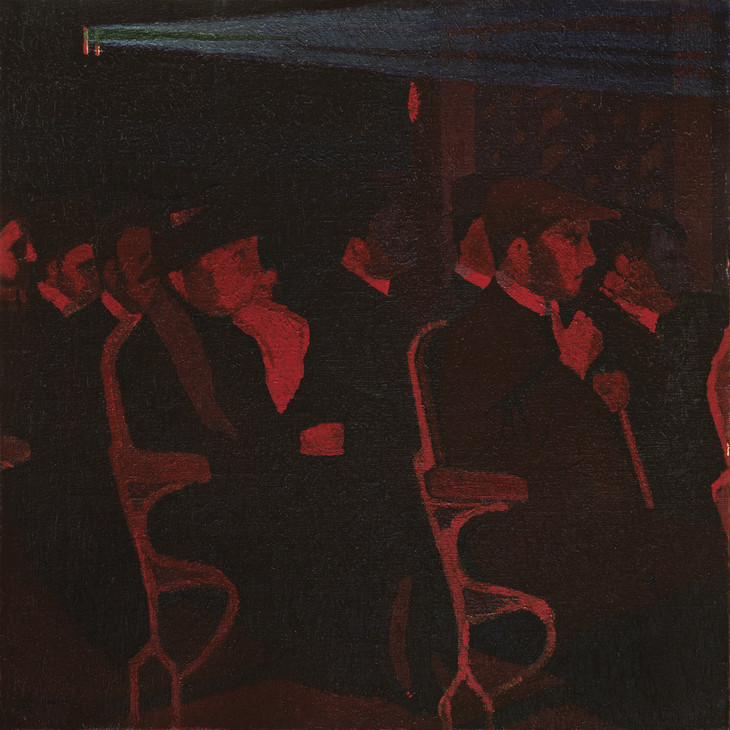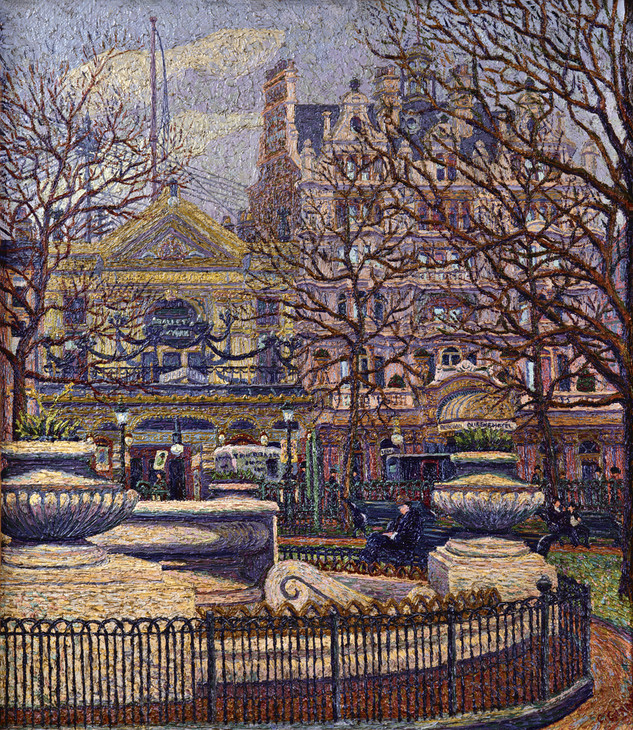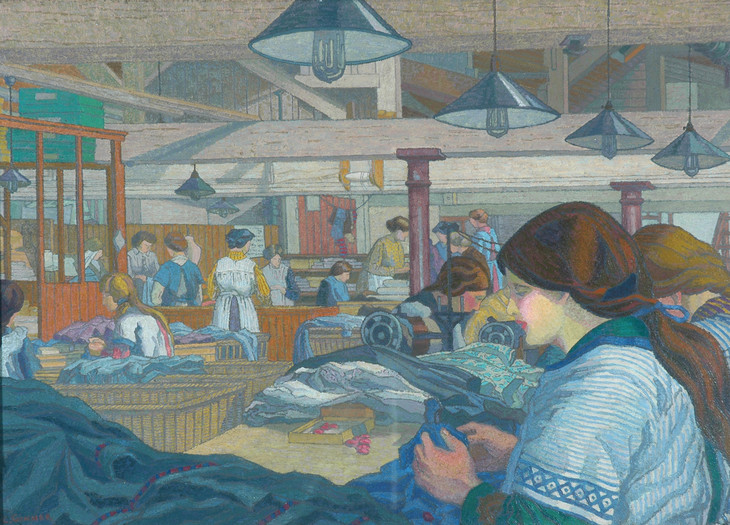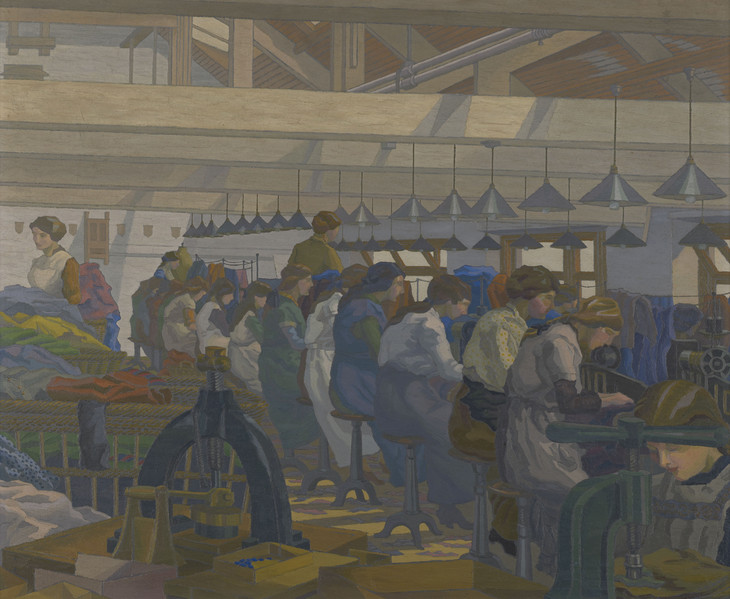Factory Girls on Strike in Camden Town 1911
Maurizio Cinquegrani
Camden Town painters rarely focused on the major sights of central London. By contrast, Maurizio Cinquegrani shows that filmmakers in these years chose to record the city in terms of its imperial landmarks and the free-flowing, even frenetic, movement of its crowds.
Factory Girls on Strike in Camden Town 1911 (British Pathé) shows a group of women marching along a road carrying a banner for the National Federation of Women Workers. Formed in 1906 by Mary Macarthur, this was arguably the organisation that did more than any other to unionise women during the strike wave of the 1910s.1 This film was part of an issue of the Pathé’s Animated Gazette, the first weekly newsreel to be produced in Britain in 1910.

Malcolm Drummond 1880–1945
In the Cinema 1913
695 x 695 mm
Ferens Art Gallery, Hull
© Estate of Malcolm Drummond
Photo © Ferens Art Gallery: Hull Museums
Fig.1
Malcolm Drummond
In the Cinema 1913
Ferens Art Gallery, Hull
© Estate of Malcolm Drummond
Photo © Ferens Art Gallery: Hull Museums

Charles Ginner 1878–1952
Leicester Square 1912
Oil paint on canvas
642 x 559 mm
Royal Pavilion and Museum, Brighton and Hove
© Estate of Charles Ginner
Reproduced with the kind permission of The Royal Pavilion and Museums (Brighton & Hove)
Fig.2
Charles Ginner
Leicester Square 1912
Royal Pavilion and Museum, Brighton and Hove
© Estate of Charles Ginner
Reproduced with the kind permission of The Royal Pavilion and Museums (Brighton & Hove)
Early films were exhibited in the music halls of London and, from the end of the first decade of the twentieth century, in purpose-built cinemas. The artists of the Camden Town Group often portrayed music halls and cinemas. Malcolm Drummond’s In the Cinema 1913 (fig.1), for example, represents an audience watching a film in the darkness of a cinema, while in the background of Charles Ginner’s Leicester Square 1912 (fig.2) is The Empire, the variety theatre which in 1896 saw the first commercial screening of films in Britain.

Charles Ginner 1878–1952
The Dressmaking Factory c.1914
Oil paint on canvas
500 x 703 mm
Huddersfield Art Gallery
© Estate of Charles Ginner
Photo © Huddersfield Art Gallery
Fig.3
Charles Ginner
The Dressmaking Factory c.1914
Huddersfield Art Gallery
© Estate of Charles Ginner
Photo © Huddersfield Art Gallery

Charles Ginner 1878–1952
The Blouse Factory 1917
Oil paint on canvas
610 x 740 mm
Government Art Collection
Photo © Reserved / Crown copyright: UK Government Art Collection
Fig.4
Charles Ginner
The Blouse Factory 1917
Government Art Collection
Photo © Reserved / Crown copyright: UK Government Art Collection
A number of Ginner’s paintings – for example, The Dressmaking Factory 1914 (fig.3) and The Blouse Factory 1917 (fig.4) – evidenced the growing presence of working women in manufacturing industries, a social change also recorded in films of the period along with scenes of women on the streets marching for their rights.
Maurizio Cinquegrani completed a doctorate on early films of the cities of the British Empire at King’s College, London, 2010.
Notes
How to cite
Maurizio Cinquegrani, ‘Factory Girls on Strike in Camden Town 1911’, in Helena Bonett, Ysanne Holt, Jennifer Mundy (eds.), The Camden Town Group in Context, Tate Research Publication, May 2012, https://www
